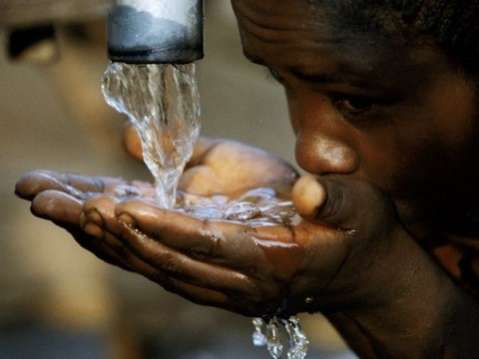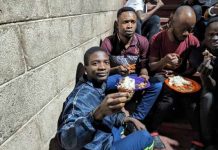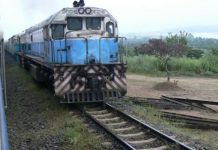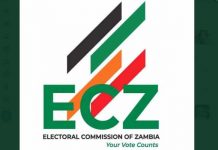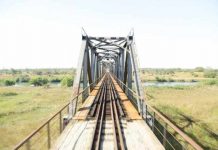Some of its financing partners include the World Bank, Millennium Challenge Corporation (MCC), and the National Water and Sanitation Council (NWASCO).
The most notable of their projects is the newly-introduced pre-paid water meter installation for its clients.
LWSC public relations manager Topsy Sikalinda explained that the pre-paid water meter installation is all part of the company’s continued efforts to improve its service delivery.
The pre-paid water meter system is a straight forward and user-friendly system to operate because it uses a smart card to handle credit and monitor water usage.
Mr Sikalinda outlined some of the benefits of the pre-paid water system which include giving the customer control of how much water they utilise, meaning that the client only pays for what they use.
Other benefits include having no water disconnections, no disputes over water bills, and reduced consumption, which comes as a result of responsible water usage.
The pre-paid water equipment include an internal unit (IU) which is installed at the client’s premises, along with the smart meter and the external meter box which houses the meter and control valve, using wireless radio signals.
In this case, the smart meter IU becomes the customer’s interface and requires a smart card to be inserted for it to become functional, giving a clear display about the credit status and useful information about the volume of water remaining, accumulated water consumption and potential leakage among others.
Some of the on-going projects undertaken by LWSC as at June 30, 2013 include the Kalingalinga Sanitation Project, which saw the construction of 350 waterborne lavatories, the construction of sewer network extension and rehabilitation, as well as water supply extension.
This project, which was financed by the World Bank, the Ministry of Local Government and Housing and LWSC, was aimed at improving access to sanitation facilities and understanding of safe and hygiene practices for people in Kalingalinga Township.
Mr Sikalinda said the outcome of this project, whose total cost is estimated at over K285,000, indicates improved hygiene practices for the people in Kalingalinga.
“As at June 2013, the water installation was 98 per cent complete, while sewer construction is 100 per cent complete,” he said.
Mr Sikalinda also said in phase one of the project, the community responded positively by beginning construction of flushing lavatories.
Another major project embarked on by LWSC is the US$10,000,000 Water Sector Performance Improvement Project, financed by the World Bank.
This project was aimed at improving technical efficiency and financial sustainability of LWSC and also to improve access to water supply and sanitation services.
This project saw the rehabilitation of intake transmission mains, the treatment plant, and the installation of meters in Kafue district.
Currently, 143,000 urban consumers have improved access to water and sanitation services in Kafue, Chilanga, Chongwe and Luangwa districts of Lusaka province.
Mr Sikalinda explained that in Luangwa, new boreholes, reservoir and meter installation were embarked on, with a new water network and treatment plant in Chongwe and Luangwa, respectively.
The $355 million Lusaka Water Supply, Sanitation and Drainage project, financed by the MCC, was aimed at increasing income through improved health through the provision of clean and safe water supply and adequate drainage in targeted areas.
This project saw the water delivery system of Lusaka city rehabilitated, replaced and expanded and providing about 200, 000 inhabitants.
Mr Sikalinda also explained that the company also embarked on a self financed project of K8,297,000, which yielded the construction of 16 boreholes, to increase water supply, which has since increased the amount of water produced and supplied.
Some of these boreholes were drilled in Chainda, Roma Park, the Multi-Facility Economic Zone (MFEZ), Kalundu, Woodlands, and Chazanga.
NWASCO also financed a K1.7 million project in Kaunda Square stage one, which saw the rehabilitation of and renewal of water distribution of 8.764 kilometers of water distribution network.
This project was embarked on to increase access to safe and reliable drinking water supply for 8,400 people in the area.
Other projects embarked on and completed by June 3, 2013, include the installation of water distribution system in Rock-Field, the installation of bulk pre-paid water meters on Government premises, the rehabilitation of sewer network in Maitenke-Matero and the Bauleni water network extension projects.
Others are the Linda water supply and sanitation project and the feacal sludge management in Kanyama and Chazanga townships.
Mr Sikalinda explained that the feacal sludge project was aimed at providing support for viable local enterprises to ensure the safe disposal of faecal waste along the entire sanitation value chain from pit-latrines.
As such, four intermediary sludge transfer stations and an aerobic plants with bio-digesters/ septic tanks and covered drying beds were constructed.
Mr Sikalinda explained that as a result of this project, the area has recorded improved access to safe water for approximately 60,000 people through the extension of existing water supply networks of water kiosks.
For LWSC, there has been improved capacity and deeper understanding of investment needs for the water trusts in Lusaka.
As the country’s population continues to grow, and more people are using up the limited resource of water, it becomes imperative that this scare and yet precious natural commodity is used wisely and not wastefully.
Lusaka Water has embarked on a number of major projects
LUSAKA Water and Sewerage Company (LWSC) has embarked on a number of major projects aimed at improving its service delivery to clients in its catchment area.

 JOIN DRIVERN TAXI AS PARTNER DRIVER TODAY!
JOIN DRIVERN TAXI AS PARTNER DRIVER TODAY!